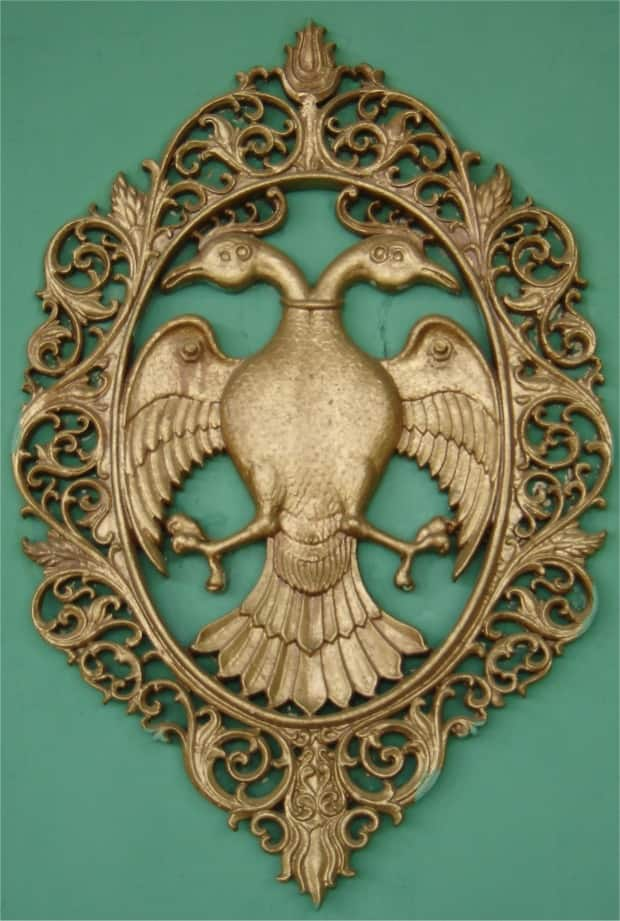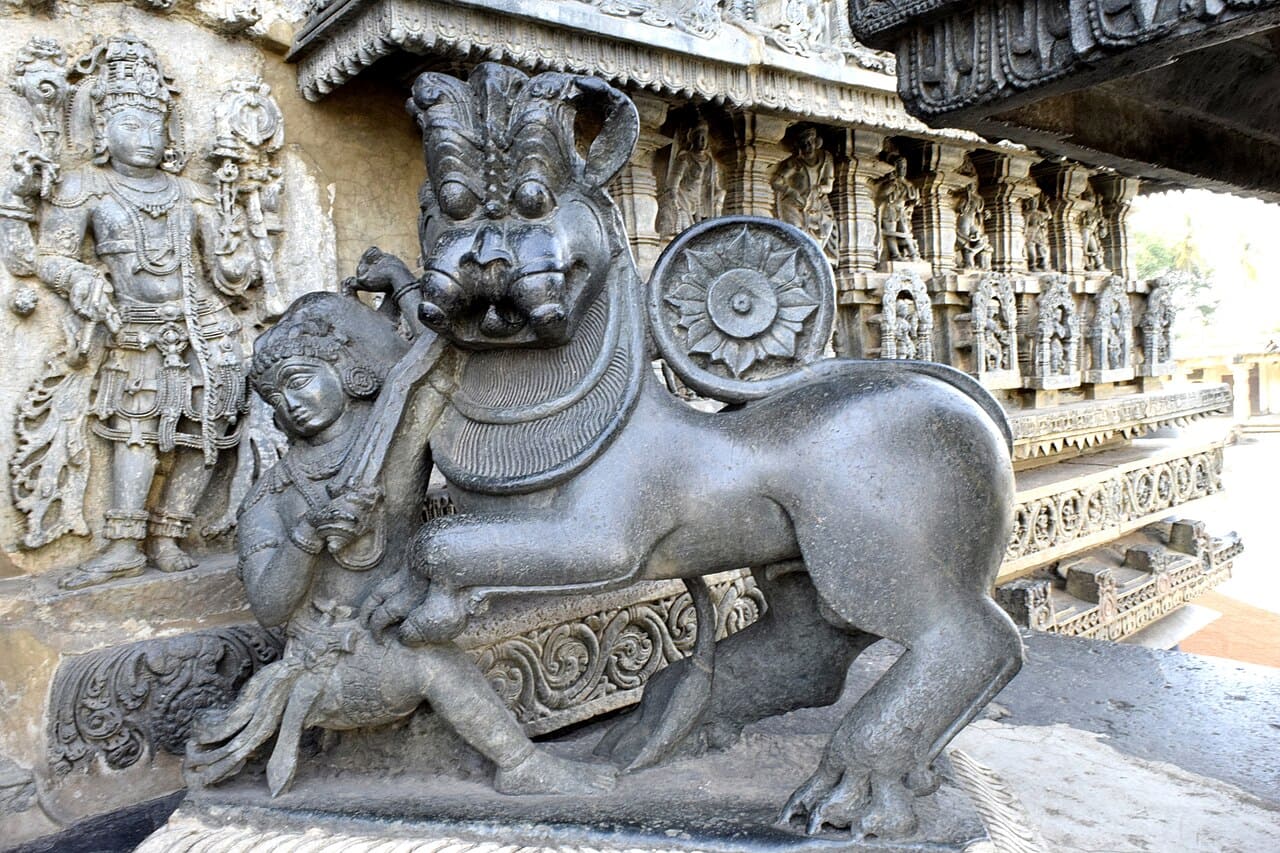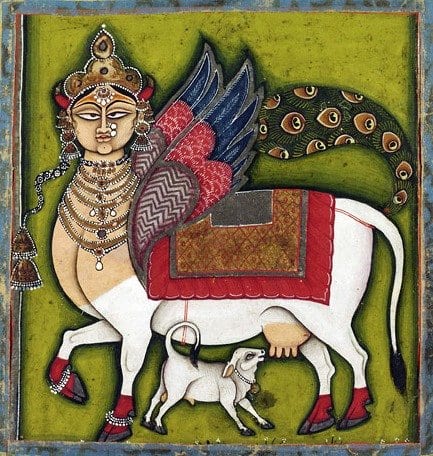



Indian mythical creatures from the Garuda to Navagunjara, symbolising great powers, have adorned pieces with cultural significance and aesthetic allure for centuries. Here, we look at ten mythical creatures that appear in Indian jewellery; each weaving a tale of protection, spirituality, and artistic expression.
 Gandaberunda (Photo by Prakash Subbarao via Wikimedia Commons)Kirtimukha: Face of Glory
Gandaberunda (Photo by Prakash Subbarao via Wikimedia Commons)Kirtimukha: Face of GloryA ferocious guardian resembling a lion, Kirtimukha, or the 'face of glory,' is a recurring motif in amuletic jewellery. Worn for protection against the evil eye, this mythical being appears in earrings, as terminals in kadas, and intricately carved pendants. Kirtimukhas are particularly popular in South India and the North-East.
Yazhi (Yali) or Vyala: Majestic Mounts and GuardiansSeen in South Indian temples, usually sculpted in pillars, Yazhi, or Vyala, is a mythical creature that serves as the mount of Lord Budh (mercury). Yazhis were considered more powerful than a lion, tiger and elephant combined. With the head of a lion, tusks of an elephant, and tail of a serpent, Yazhi is a composite creature, a chimera with many variations like Ashva Vyala (horse head) and Gaja Vyala (elephant head). These composite beings, powerful beyond comparison, are believed to provide both physical and spiritual protection. Yazhi adorns grand pendants, pendant finials, bangles, and complex tableau designs in South Indian jewellery.
 Yali or Yazhi statue at Kesava Temple. With the head of a lion, tusks of an elephant, and tail of a serpent, Yazhi is a composite creature, a chimera with many variations like Ashva Vyala (horse head) and Gaja Vyala (elephant head). (Photo by Vasukrishnan57 via Wikimedia Commons 4.0)Makara: Aquatic Marvels
Yali or Yazhi statue at Kesava Temple. With the head of a lion, tusks of an elephant, and tail of a serpent, Yazhi is a composite creature, a chimera with many variations like Ashva Vyala (horse head) and Gaja Vyala (elephant head). (Photo by Vasukrishnan57 via Wikimedia Commons 4.0)Makara: Aquatic MarvelsAnother cherished chimera in Indian jewellery, Makara is an aquatic composite being with the body of a fish, trunk of an elephant, feet of a lion, eyes of a monkey, ears of a pig and the tail of a peacock. In mythology, makara is said to be the mount of the sea god Varuna, and considered the insignia of Kamadeva, the god of love. The latter reference is the reason why this motif is considered the symbol of virility. Makara, as the mount of Ganga, is depicted with the head and jaws of a crocodile, an elephant trunk, scales of a fish, and a peacock tail. Three types of jewellery with the makara design; the makara kanti (necklace), the makara kundela (earrings) and makara keyura (arm band); are believed to have been worn by gods and goddesses. Makara motif is seen as terminals of kadas, as tops of pendants, and in hoop earrings.
Naga: Serpent SymbolismThe mystical five-headed serpent, Naga, appears in ancient 'jadainagam' (braid snake) jewellery, adorning the braid of a woman, usually the bride. Associated with activating the energies of the crown chakra and promoting fertility, Naga is also depicted providing shelter to Lord Krishna in pendant designs. It appears in decorative pendants, earrings, rings, and bangles.
Garuda: Eagle-Human EnigmaWorshipped as the mount of Lord Vishnu, the eagle-human mystical being has gigantic wings. Since there is a certain reservation in wearing an eagle motif, Garuda wasn’t so popular in jewellery. Usually, a stylized pendant featuring Garuda has nagas and peacocks as well. In Assamese jewellery, which has a lot of fauna representation, the Xen sorai (hawk) and Lokaparo (twin pigeons placed back-to-back) are variations of the eagle representation.
Navagunjara: Majestic ChimeraThe Navagunjara is believed to be composed of nine (nava) animals. It has the head of a rooster. It stands on three feet which belong to an elephant, a deer and a tiger. The fourth limb is a raised human hand holding a lotus. It has the neck of a peacock, the hump of a bull, waist of a lion and the tail of a serpent. The being was described in the Odia version of the Mahabharata by Sarla Dasa and is said to be the manifestation of Lord Vishnu who appears in front of Arjuna to enlighten him. The Navagunjara is depicted grandly in richly embellished pendants.
Kamadhenu: Divine Mother of CowsKamadhenu, the mother of all cows in whom all the gods and goddesses reside, is believed to have appeared during the churning of the cosmic ocean. Some believe she is the daughter of the god of creation, Daksha. Kamadhenu is also referred to as the wish-granting cow. In South Indian jewellery, Kamadhenu either appears with other motifs or as a stand-alone motif in pendants and earrings.
 (Image of 1825-55 Rajasthani painting via Wikimedia Commons)Mayura: The Auspicious Peacock
(Image of 1825-55 Rajasthani painting via Wikimedia Commons)Mayura: The Auspicious PeacockIn Indian mythology, Mayura (peacock) is believed to be created from the feathers of Garuda. It is usually depicted as killing a snake which is symbolic for the cycle of time. Mayura is the mount for several gods and goddesses, including Karthikeya (brother of Lord Ganesha) and Goddess Saraswati. Since Goddess Lakshmi, the goddess of wealth, is said to be symbolized by Mayura, it is considered an auspicious symbol. Indian jewellery showcases the Mayura in a myriad of ways with gold, silver, precious and semi-precious stones.
Kinnara: Harmonious Half-Bird, Half-HumanKinnara, a half-bird and half-human creature with musical prowess, appears in jewellery as brooches and pendants. These beings, with creative qualities in poetry, music, and dance, add a unique and less common touch to the array of mythical motifs in Indian jewellery.
Dragon: Symbol of Power and LuckRevered in Tibetan culture, the fire-breathing dragon symbolizes power, creativity, and good fortune. Influenced by Tibetan aesthetics, dragon motifs grace Indian necklaces, bangles, earrings, pendants, and rings, often featured with red corals and white pearls, both of which have significance in Buddhism.
Discover the latest Business News, Sensex, and Nifty updates. Obtain Personal Finance insights, tax queries, and expert opinions on Moneycontrol or download the Moneycontrol App to stay updated!
Find the best of Al News in one place, specially curated for you every weekend.
Stay on top of the latest tech trends and biggest startup news.